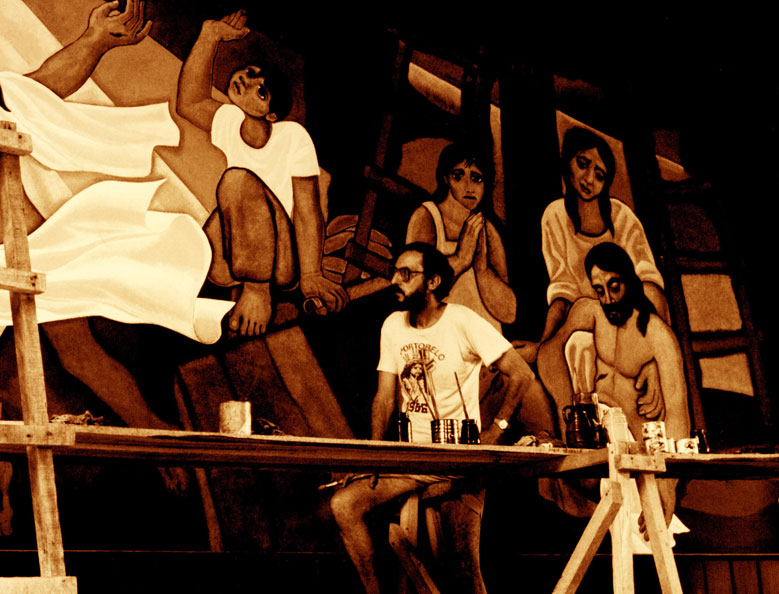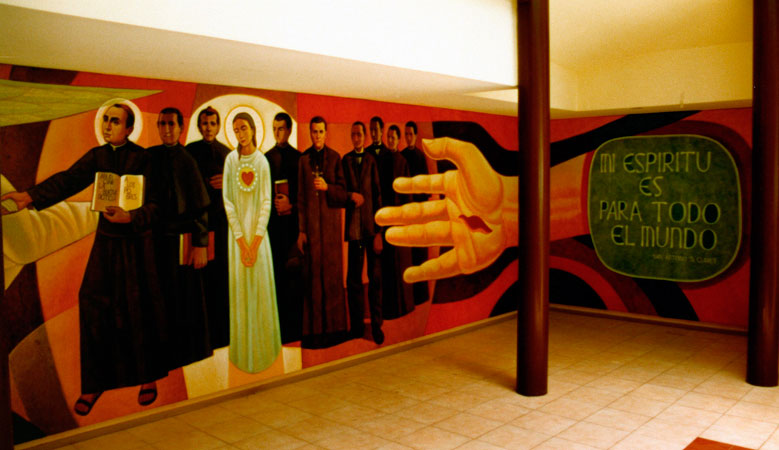The Missionary Painter
 |
|
Fr. Cerezo is held in high esteem by those |
When Claretian Father Cerezo Barredo became a priest in Spain in 1957, his idea for what his work as a missionary would be puzzled his superiors. Fr. Cerezo wanted to do something quite different than anyone in the congregation had done: meld his creative talent as an artist with his desire to serve those in need as a missionary priest.
Throughout his studies at the School of Fine Arts in Madrid during those early years, he remained dedicated to his vocation, and as his superiors saw his remarkable talent, they allowed Fr. Cerezo the opportunity to pursue his vocation to the fullest extent.
And that is precisely what Fr. Cerezo has done for the last fifty years, becoming both a highly regarded artist and architect. His colorful, soulful religious murals, mosaics, and stained glass grace chapels and churches throughout Latin America, Europe, and here in the United States.
For each work of art that Fr. Cerezo conceives and executes, he draws upon his own lived experience among the poor to create a piece that expresses their shared experience of life and faith. “What the sacred art of our time desires is to light and make clear spiritual worlds which words can only haltingly describe,” he says. “The actualization of sacred art comes through a search for a sincere expression of the Christian meanings—which have to be lived before they can be expressed.”
Fr. Cerezo, like all Claretians, shares his life with the people he serves by living among them and taking part in their struggles, both spiritual and temporal. These struggles are those of the poor, particularly in Peru where he lived for many years, witnessing and expressing their realities of persecution and martyrdom amid political strife. Mural painting became a primary form for Fr. Cerezo, an approach that is born out of the deep tradition of mural painting as the artistic meeting place of the struggling Christian community.
 |
|
Fr. Cerezo’s religious murals, mosaics, and stained |
Known to many as the “painter of liberation,” Fr. Cerezo’s art blends literalism and abstraction as his work fuses the stories of Christ’s life, persecution, and salvation with the faces, aura, and stories of the poor he has lived among throughout his missionary life.
One of his first works in the missions in Peru was in a drug-infested area. Because of their actions against the drug cartel, the town and the church were attacked. The cartel burned down the church and with it Fr. Cerezo’s huge mural depicting the history of salvation. Fr. Cerezo used his architecture skills to redesign the church, placing the sanctuary in the center of the long, narrow building—which was a new approach to the use of a church’s interior at that time. His new mural spans the long back wall of the church today.
Fr. Cerezo is held in high esteem by those he has lived among, by those who experience his art, and especially by his fellow Claretians for his remarkable blending of artistic and spiritual expression as an avenue to pursue his mission. “Cerezo is appreciated all over Latin America and in many countries of Europe who follow the South American church,” says Claretian Fr. Richard Todd, who has known Fr. Cerezo throughout his many years as a missionary priest. “He is a vigorous embodiment of our Claretian mission.”
